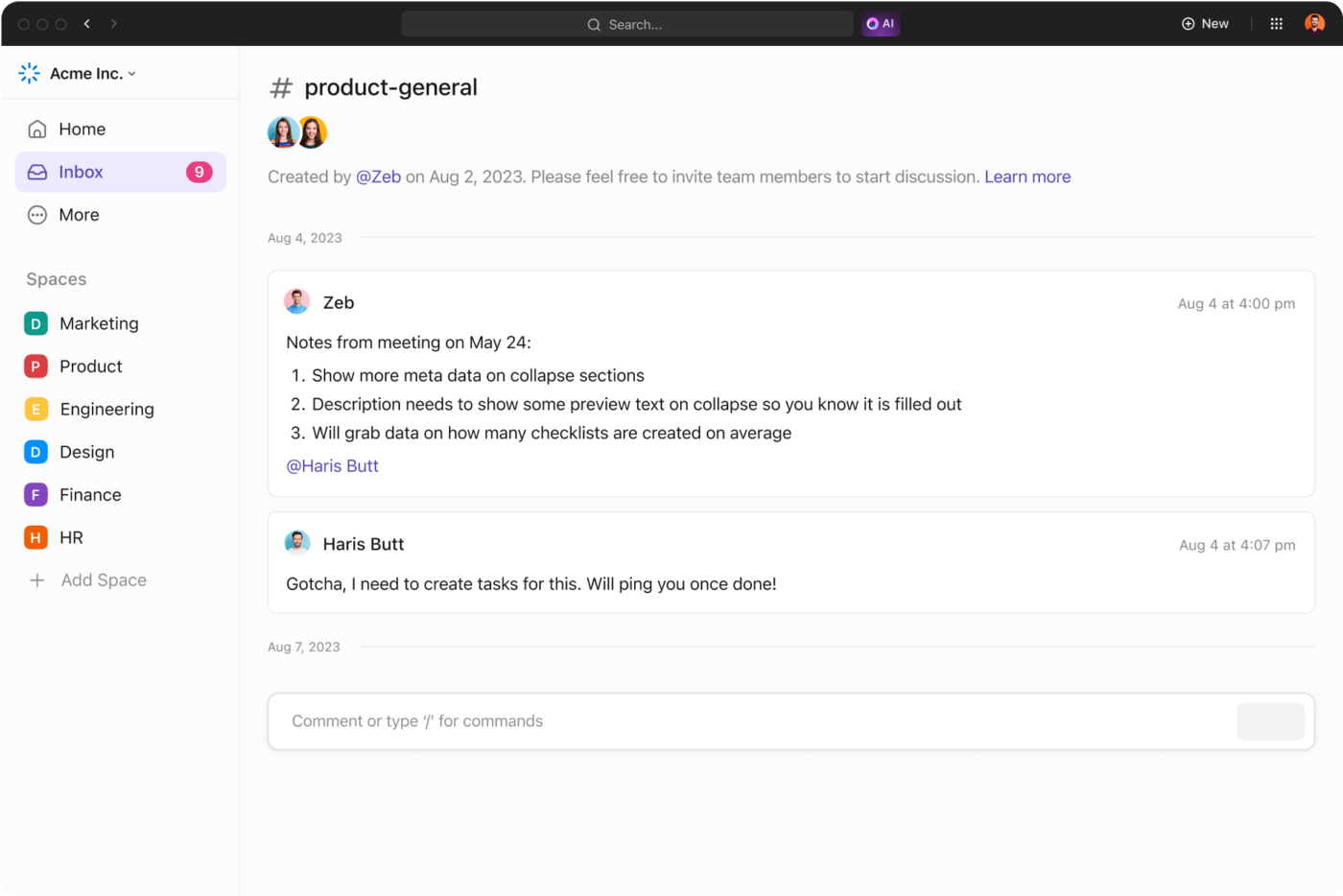Top 10 Software Development Challenges & How to Manage Them

Sorry, there were no results found for “”
Sorry, there were no results found for “”
Sorry, there were no results found for “”
Building great software isn’t just about assembling talented teams. You also need a well-defined development process and the right tools to ensure the team succeeds.
Unsure where to start? You’re not alone.
Every developer team faces challenges, from tech adaptation and stakeholder collaboration to resource retention and quality assurance
The good news is that you can overcome such challenges with awareness and dedicated efforts. In this guide, we will explore some of the common software development challenges and strategies for addressing them effectively, changing the game for software development teams.
A software developer’s day involves a lot more than coding. They have to participate in the entire software product development process, which includes the development phase, software testing, security assurance activities, code review, and other responsibilities right up until the project delivery. And meetings. Often, too many meetings.
This leads to several common challenges, and listed below are the most significant ones:
Not so long ago, technologies like artificial intelligence, the Internet of Things (IoT), and others seemed like a walk into the future. Today that is no longer the case.
The technology landscape is evolving at breakneck speed, and software development teams need to move at this pace.
Learning new programming languages and frameworks, adopting cutting-edge technologies and tools, and keeping track of the competitive landscape can all get stressful. Sometimes, software engineers and software project managers may feel like they are constantly playing catchup.
The good news is there are proactive steps you can take to address this challenge:
Here’s a scenario: You have built a software solution or an app according to the outlined features and with buy-in from all the stakeholders.
The entire project is ready to go live, and the client suddenly comes back with a small change—they want a new feature added, which can impact the entire process.
If not addressed head-on, it can derail the entire project and even crush the team’s morale.
Here are some solutions to ensure your project stays on track:
By doing so, you’re ensuring the project remains adaptable and flexible, reducing the risk of disruptions and enhancing its overall success.
ClickUp Pro Tip: Prioritize features with ClickUp Brain that automatically analyzes user feedback and roadmaps. Make informed decisions about which features to focus on based on user needs and strategic goals!
Sometimes, it is not just the client who can make last-minute changes. With new market trends and technologies always becoming the top focus, you may need to incorporate these new changes to make your product remain relevant.
Therefore, understanding what users are demanding, the features competitors are offering, and emerging technologies are crucial for any software development project.
To address these challenges, you need to:
Since software applications today rely on multiple systems and external APIs (Application Programming Interfaces), they need to work properly on all these platforms. This integration, however, can be a complex undertaking fraught with challenges:
Imagine launching a software product only to discover that it is riddled with bugs and glitches. Not a pleasant scenario, right?
Without clearly defined quality standards and a robust QA process, developers might spend time fixing bugs that could have been caught earlier, wasting valuable development resources.
Moreover, unclear quality expectations make it hard to determine when a feature is ‘finished.’ This leads to scope creep, where new features keep getting added or reworked, causing delays and missed deadlines.
Did You Know? ClickUp’s ISO 27001:2013, ISO 27017:2015, and ISO 27018:2019 certifications meet the highest international standards for security, reliability, quality, and trust.
The success of any software development project hinges on effective project management. Without it, software projects can get delayed, leading to missed deadlines or to projects exceeding budget constraints.

Security breaches can be catastrophic, exposing vulnerabilities in the team’s development process and severely damaging their reputation. What’s worse, clients may lose trust and be hesitant to work with them in the future.
Software riddled with vulnerabilities can expose sensitive user data and cause significant financial and reputational damage. It can occur due to:
This can essentially lead to:
Did You Know? With ClickUp, you get top-notch security features to keep your data safe, including:
Software development teams are consistently trying to balance quality, speed, and scope. In case of resource and time constraints, they have to set strict priorities, concentrating on essential features at the possible expense of user experience or long-term maintainability. This can lead to:

While the software development process may seem to involve a lot of working independently, it also requires teamwork. Every team member has to ensure they focus on their individual parts while being in sync with what others are doing. In case of any dependency, the project managers and team leads need to ensure that it all works out properly.
Communication and collaboration are key to managing the entire project seamlessly. If a team member feels isolated or uninformed, this can lead to miscommunication or misunderstandings, especially regarding deadlines and other decision-making.
To ensure proper communication and collaboration, one needs to prioritize a culture of open communication and active listening. This includes:

Changing trends and technologies also mean organizations need to find skilled resources and ensure they are retained for long-term growth. However, the global demand for tech talent has always kept ahead of supply. One often sees multiple companies scouting the same top talent. Without a sufficient pool of skilled software developers, projects can be delayed, or the potential of your software development efforts can be limited.
Plus, if you do not have the right number of resources, existing software engineering teams can feel the heat, leading to burnout and decreased team morale.
For most software development projects, the key to addressing these issues is putting together a robust process with the right protocols and effective resource and project management tools. While this may be challenging, the good news is that there are ways to streamline it all.
Powerful tools are available to help you implement these strategies, streamline your workflow, and plan your software development projects easily.

ClickUp is an all-in-one productivity and project management tool specifically designed to help development teams tackle software development challenges and successfully achieve their goals.
The Product Development Lead at Powerflex uses ClickUp to streamline multiple project-related activities and keep everyone on the team on the same page.
To keep every team member informed about their critical activities and understand deliverables, they embraced ClickUp Tags, a simple but effective way to add context to each task. Using custom tags, you can add context to each task, allowing you to filter the list and board view based on the specific task.

For example, if you want to categorize tasks based on critical parameters for a daily standup, you can either use the deadline filter in the Timeline view to schedule tasks and move expectations or search using the “urgent” task to find all the critical activities marked in your project. This makes it easy to find all the activities marked “urgent,” even in Board view or Lists, ensuring that no activity falls through the cracks because you put a particular filter.
ClickUp helps me stay out of “chaos” mode. We can now be as proactive as possible about the projects we’re working on.
ClickUp for Software Development helps you optimize your processes and collaborate on a single platform, be it for product development or maintaining a project roadmap.
Here is how ClickUp can help you with various software development processes:
Automate repetitive tasks with ClickUp Automations to free up your team’s time for more strategic and creative endeavors. This allows developers to focus on what matters most—building amazing software.
For example, if you spend a lot of time managing project tasks or following up with relevant teams on project deadlines, you can easily create automation when a particular task’s due date is near. In ClickUp, you can get options to change the list, change priority(from Normal or Low to High or Critical), or even create a new task for the manager when a due date arrives. This simple automation helps you flag critical items and ensure that there are no missed deadlines.


Use ClickUp Chat to communicate in real-time on specific tasks and projects. You can even work on documentation with other software developers using ClickUp Docs, the documentation feature with real-time collaboration in ClickUp. This reduces misunderstandings and keeps projects moving forward smoothly. For instance, features like version history and collaborative editing in Docs allow the team to keep the documentation updated as the API evolves.

ClickUp Pro Tip: No need to make a separate list of what to assign to whom! Assign ClickUp Tasks directly from your Chat!
Gain real-time project insights through customizable ClickUp Dashboards and reports. This allows developers to track progress, identify potential roadblocks, and make data-driven decisions. With this data visualization tool, you get real-time access to critical metrics such as sprint velocity, burn rates, lead times, and cycle times, facilitating informed decision-making throughout the development process
Prioritize tasks and features strategically, ensuring your team focuses on the most impactful work first with ClickUp Task Priority. Additionally, resource management tools like ClickUp help you allocate developers effectively and avoid overbooking or under-utilization
Get a headstart with pre-built templates that provide a structured framework for common software development tasks, like bug tracking, sprint planning, and release management. This allows teams to jump right into their specific project needs without having to build a plan from the ground up
Here are a few templates that will help reduce time spent on setup and configuration, allowing developers to focus on coding and delivering features:
The ClickUp Software Development Template allows Product, Design, Engineering, QA, and Development teams to work together seamlessly in a single workspace. The template helps with every stage of the development lifecycle, from creating and managing a product roadmap to delivering features and fixing bugs.
Leverage the ClickUp Software Project Template to plan your entire project scope, from ideation to execution. With this template, you get:
Use the ClickUp Development Schedule Template to plan all your software development projects on one platform, enabling you to:
Since the information technology industry is evolving at a rapid pace, the common software development process is also changing rapidly. With AI and the mix of Agile and DevOps methodologies, the entire process is witnessing a significant change, and software engineers need to go beyond coding skills to truly up the game. The ten software development challenges we’ve explored are just some of the roadblocks you might encounter on your development journey. If you can successfully address these software engineering challenges, you have a greater chance of delivering a fantastic product.
The key is to adopt the solutions and strategies outlined in this blog and also equip yourself to navigate these and future challenges effectively as a software engineer. Remember that the key lies in:
With program management capabilities and dedicated advanced features, ClickUp can be your ultimate tool for tackling these software development challenges head-on. We hope these tips will help you stay prepared for the next time you face a software development challenge and be proactive in taking steps to counter it. ClickUp can be your partner and aide in this effort. Try for yourself—sign up on ClickUp for free!
© 2026 ClickUp